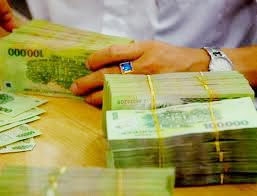Making spending count
 The Ministry of Finance (MoF) has estimated state budget collections will amount to VND674.5 trillion ($32.58 billion) in 2011, exceeding the set target of VND79.5 trillion ($3.84 billion). And according to the National Assembly’s Finance and Budget Committee the surplus will be at least VND90 trillion ($4.34 billion). What is your comment on these numbers?
The Ministry of Finance (MoF) has estimated state budget collections will amount to VND674.5 trillion ($32.58 billion) in 2011, exceeding the set target of VND79.5 trillion ($3.84 billion). And according to the National Assembly’s Finance and Budget Committee the surplus will be at least VND90 trillion ($4.34 billion). What is your comment on these numbers?
The MoF’s figures are based on actual January–September budget collection figures (VND501.5 trillion or $24.2 billion) and estimated collections in the last three months. Meanwhile, the committee’s budget figures were based on check and inspection results at large enterprises and localities, [and] particularly the production and business performance of state-owned groups and corporations. Since there is a difference in budget surplus figures these two state bodies are obliged to make clarifications, then the National Assembly will decide on the estimated collection figure for this year. From there, a number of important development targets will be revised, including that on overspending.
This huge surplus could indicate our forecasting is still below par. Is that the case?
The world’s economy has been highly volatile in recent years, making even international financial organisations in developed countries deliver inadequate forecasts. The proof is seen in gold price forecasts and the actual situation so far the year.
In fact, it is encouraging when actual budget collections are often higher than projected because we can spend more on key state projects and social welfare programmes and alleviate overspending.
It won’t be encouraging if annual budget surplus figures often excess 15–25 per cent as this will make it hard for the government and the National Assembly to take initiative in settling the surplus.
Usually, in April every year the MoF acquires exact budget surplus figures for the preceding years, then in May it submits these figures to the National Assembly seeking ways to deal with the surplus. In July and August the government gives instructions on how the surplus can be used.
If the MoF made more accurate forecasts to help the government and the National Assembly draw closer budget estimations, a myriad projects and programmes would not face delays or have their progress extended due to capital scarcity. This would enhance state capital usage efficiency.
I think a surplus level of 5–10 per cent would be acceptable. A more than 10 per cent budget surplus means the budget estimate drafting by the MoF and localities needs to be improved.
Some experts suggest using the budget surplus to slash overspending. Is that feasible?
We should accept some degree of overspending to have money to spend on key projects of high social and economic value.
Economic development would not be sustainable if we spent all our money on paying debts.
This year, the National Assembly accepted overspending tantamount to 5.3 per cent of the gross domestic product (GDP). The government is striving to keep the [overspending] rate at 4.9 per cent of GDP.
We should therefore not use all or a large portion of the budget surplus to ease overspending. It would be wise for us to use part of the surplus to reduce the overspending rate to 4.7–4.8 per cent of GDP only.
What the stars mean:
★ Poor ★ ★ Promising ★★★ Good ★★★★ Very good ★★★★★ Exceptional
Related Contents
Latest News
More News
- Vietnam urged to shore up supply-chain resilience amid global uncertainty (December 10, 2025 | 18:47)
- Unpacking new momentum in Vietnam’s M&A market (December 10, 2025 | 09:59)
- Forum honours outstanding M&A deals, strategies, and advisory firms (December 09, 2025 | 18:22)
- Vietnam enters defining phase of M&A growth (December 09, 2025 | 17:00)
- Landscape strong for domestic acquisitions (December 09, 2025 | 15:34)
- FDI in Vietnam jumps on additional capital and share purchases (December 09, 2025 | 13:56)
- THACO and Hyundai Rotem sign strategic railway partnership (December 09, 2025 | 12:14)
- Fundamentals required for M&A wins (December 08, 2025 | 11:08)
- When infrastructure shapes the flow of capital in logistics (December 08, 2025 | 10:39)
- Vietnam positions logistics as strategic growth engine (December 08, 2025 | 08:00)

 Tag:
Tag:





















 Mobile Version
Mobile Version